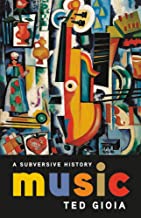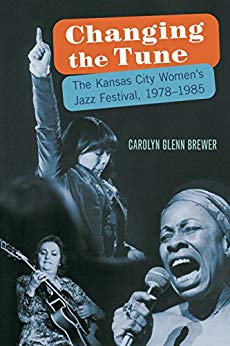 Alan Lomax: The Man Who Recorded the World
Alan Lomax: The Man Who Recorded the World
By John Szwed
Viking, New York, 2010; 448 pp.; $29.95 hardcover
Review by John McDonough
Maybe it wasn’t the serpent that corrupted the Garden of Eden. Maybe it was the Hawthorne effect. That’s the notion that the intuitive purity of an isolated culture can be disturbed and altered simply by a self-awareness that it’s being watched by an outsider. Robert Riskin dramatized it all with a Capra touch in Magic Town (1947). Pollster James Stewart discovers a small town whose opinions perfectly mirror national polling results – until the town learns of its special gift. Then it vanishes.
Much of John Szwed’s remarkable biography of folklorist and ethnomusicologist Alan Lomax is about the rituals and consequences of cultural contact, between innocence and commerce and their interactive effects. There are scenes in Alan Lomax: The Man Who Recorded the World that have the tension and drama of a great adventure film. The McGuffin of the quest is always the same: authenticity.
It was 1933. Convinced there was a distinct form of Negro folk music that commercial record companies had not captured, John Lomax and his 20-year-old son Alan hauled primitive cylinder recording equipment into the most deeply isolated backwaters of the rural South, the black prison farm. Turned away by Huntsville Prison in Texas as suspected “reformers,” they soon arrived at Angola, Louisiana, where they found Huddie Ledbetter (Leadbelly) and first heard songs like “The Midnight Special” and “Goodnight Irene.”
But they were caught in the same dilemma that vexed Jimmy Stewart: how to insulate the purity of something undiscovered and indigenous from the taint of self-consciousness and contact with outsiders. Like Columbus, they were colonizing a pristine cultural frontier. Unlike the European explorers, though, the Lomaxes came as stenographers, not conquerors. Nevertheless, they would become a portal through which a new kind of musicology began to alter America’s vision of itself.
Back in Washington, D.C., young Lomax lectured fellow scholars, illustrating his talks with his field recordings. “The idea of giving a lecture based on recording was unprecedented,” Szwed writes, “but to use records to argue that folk songs were deserving of serious study was even more radical.”
Fortunately Alan Lomax lived in radical times. Szwed makes clear that the political context of the New Deal nourished Lomax’s mission. His drive to document “the forgotten people of modernity” was in perfect register with a progressive decade broadly symbolized by the “forgotten man.” His passion for social justice was an outgrowth of his early fascination with the blues, a view that separated him increasingly from his more culturally conservative father with his interest in cowboy and bluegrass songs. Alan met John Hammond when he went to Harlen County, Kentucky, during the 1932 coal strike, “a pilgrimage site for students of the left,” Szwed writes, “much like Mississippi or Alabama would be during … the 1960s.” In his zeal to record the rural black experience, one only regrets that Lomax didn’t penetrate the KKK underground. But he was living dangerously enough. So paranoid was the South toward outsiders, he was barely more safe than a union organizer.
[pullquote]Szwed makes clear that the political context of the New Deal nourished Lomax’s mission.[/pullquote]
When Lomax brought Leadbelly to New York, the two men were quickly embraced by the city’s literarati and intellectuals, who were dazzled by a black performer “who actually lived the life about which he sang.” The press discovered them too. Such authenticity not only made great copy. It foreshadowed the future of American music and the overthrow the professional songwriting class by the singer-songwriters to come in the 1960s. Time called Leadbelly “a virtuoso of knife and guitar.” The March of Time dramatized his story on radio, launching both his legend and his career.
Szwed draws a lively, sometimes romantic picture of Lomax’s place in “the widening circle of performers and playwrights who saw the arts as a key to political change.” It was a Popular Front circle that included the Group Theater, Café Society, John Hammond, Alistaire Cooke, Aaron Copland, Will Geer, Pete Seeger, Max Gordon, Langston Hughes, Zora Neale Hurston, Burl Ives, Norman Corwin, Elia Kazan, Murray Kempton, Archibald MacLeish, Arthur Miller, Studs Terkel and many more. To review such an honor roll of American letters today (one neatly summarized in the infamous Red Channels blacklist of 1950, which did not overlook Lomax) is to be reminded that for all the Fox fantasies of Obama as a Marxist radical, America today is essentially without a left.
Lomax was an imperial power, constantly scanning for fresh frontiers. He penetrated voodoo culture — Szwed spells it “vodou” — in Haiti and for nearly eight years in the 1950s spread out across Europe from Spain to Italy. Thus the subtitle, The Man Who Recorded the World. Among his discoveries, largely unknown outside of Spain, was “Saeta” and “Alborda de Vigo,” which found their way to George Avakian and Gil Evans and into Miles Davis’s Sketches of Spain.
After Leadbelly, Lomax’s two most famous “discoveries” were Jelly Roll Morton, whom Alistaire Cooke recommended to him in 1938; and Woody Guthrie, whom Lomax met at a benefit for Spanish loyalists in 1940. Unlike his more isolated subjects, both these men had traveled widely and were, anthropologically speaking, no longer pristine. Morton was especially problematic because Lomax had little interest in the folklore value of jazz and New Orleans. But Morton’s tales left him spellbound, “a recitation of Homeric proportions,” Szwed says. The result was the most thoroughly documented case in the Lomax collection, and a book, Mister Jelly Roll. Lomax also drew on some of the performers form John Hammond’s first Spirituals to Swing concert in 1938 for further interviews, though generally he believed jazz had been thoroughly corrupted by white incursions (a notion with which the late historian Richard Sudhalter would certainly take issue).
Lomax had a much longer and closer relationship with Guthrie. He saw through the Will Rogers pose to a “self-made intellectual,” Szwed says, “with the curiosity and critical ability necessary to succeed.” He knew how to shape a public persona. “Guthrie could play the hillbilly to perfection when it suited him,” Szwed writes. “The highbrow disguised as a primitive.” So why was Lomax drawn to this faker? The reason was he was a real faker, “a synthesizer,” says Szwed, “a bard of a region of the country that was changing quickly.” If purity was Lomax’s objective early on, cultural interaction became a focus of his study from the ’40s forward.
As World War II began, Lomax’s leftist politics became an object of discreet FBI interest. It remains a recurring but minor theme in the Lomax story, but never rises to the level of a dramatic naming-names faceoff. First, there was never any evidence that he was a communist. And second, even if he had been, he would have had little to lose. Throughout his life Lomax lived from hand to mouth, as if money was something to feel guilty about. In 1950 when the Weavers put “Goodnight Irene” on The Hit Parade for 15 weeks and Lomax found himself with a windfall royalty of $6,400, he declared it “unearned income” and financed his next field research with it. In 1981, at age 66, his total earned income was $5,130. Five years later President Reagan awarded him the National Medal of the Arts. “[He] was surely the poorest recipient of that honor,” Szwed tells us. “His tax return for the previous year showed that his adjusted gross income was $11,531.” His died in 2002 at age 87.
Szwed has assembled a masterful survey of the man whose research and resolve helped lay the cornerstones for the folk revival and folk-rock movements of the ’60s and, accordingly, a new face of American music. An accompanying discography might have been useful. But in Lomax’s case that would require a companion volume. I find only two minor shortfalls and no errors. First, there are no photos in the book, save for one unidentified picture of Lomax opposite the title page. And second, Szwed might have gone a bit more deeply into the topic of copyrights, which Lomax seemed to view with indifference if not hostility. How can a publisher-dominated business model accommodate an oral tradition in which no clear composer titles are recognized? Lomax became entangled in this when book publishers like Macmillan had to deal with his folk song collections. E.B. Marks claimed a copyright to “El Rancho Grande,” which Lomax had found on a field trip to Mexico. Even Chick Webb’s “A-Tisket A-Tasket” had existed as a traditional children’s song called “Kitty Kitty Casket.” Howie Richmond and The Richmond Organization (TRO), which helped fit many of Lomax’s more celebrated discoveries into the prevailing business configuration, would seem to have a place in the Lomax story, otherwise superbly told here.






Terrific piece by John! A minor cx--it's Alistair (no "e") Cooke. And John's DB masthead title is "Senior Contributor", held solely by John until Michael Bourne joined him in this distinction.
It's much easier to udenrtsnad when you put it that way!
A provocatively ambiguous comment. But I'm not sure what you mean. Can you expand?
cheers... john mcd